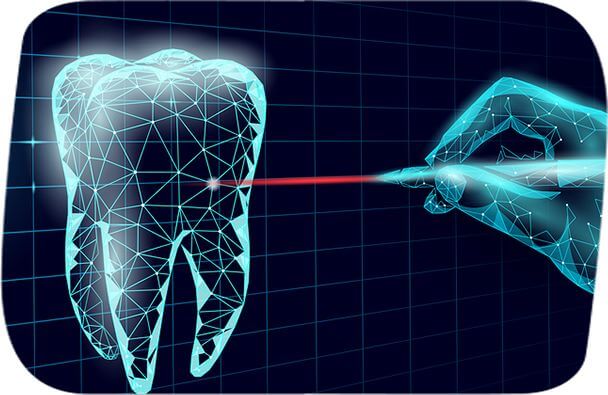MyRay Hyperion X9pro
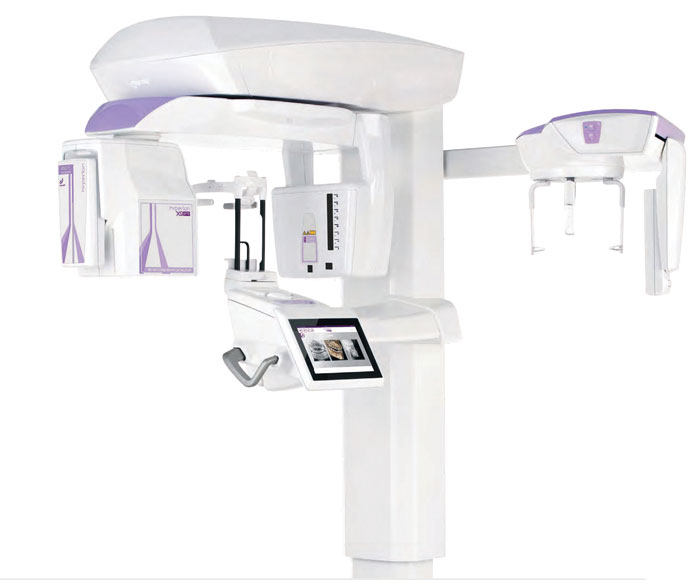
Hyperion X9 pro offers the new 3D technology, cephalometric projections and a wide range of 2D examinations.
2D/3D high-definition imaging and cutting- edge technology for a complete, upgradable, and small-sized platform. Hyperion X9 pro meets every diagnostic requirement by easily integrating into the work flow and guaranteeing maximum comfort for both patient and operator.
SuperHD quality images for unfailingly perfect diagnoses thanks to easy and completely guided procedures. Full accessibility and user-friendliness with the innovative full-touch control panel and fast Face To Face positioning which guarantees maximum comfort to both patient and operator.
The wide scalability and modularity of Hyperion X9 pro allows to change the setting according to your needs, upgrading from a basic to an advanced version in a simple and cost-effective manner.
Powerful, reliable, easy.
Castellini X Radius Compact
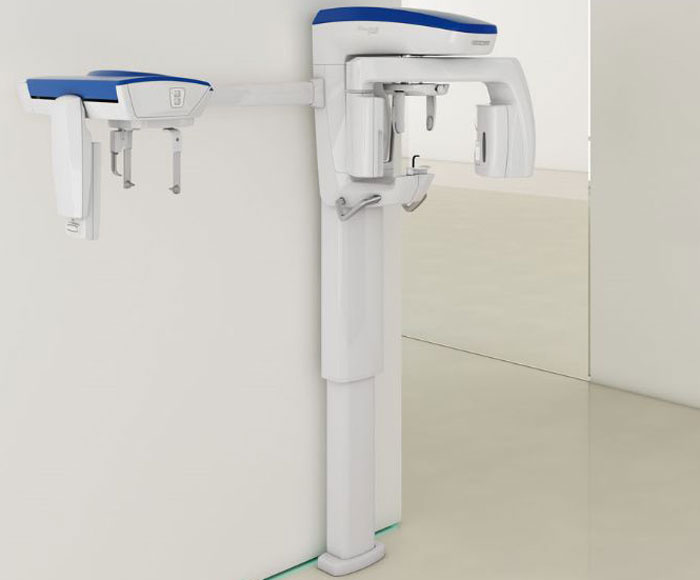
The X-Radius Compact combines cutting-edge 2D and 3D imaging technologies with the smallest footprint in its class. It features a user-friendly software suite and guided procedures to maximize your diagnostic capabilities. Enjoy excellent clinical performance with protocols that minimize radiation exposure, safeguarding patient health.
PAN Today, CEPH Tomorrow
With X-Radius Compact, you have access to a complete 3D/PAN/CEPH solution whenever you need it. To facilitate a smaller initial investment, the system can be easily upgraded after installation. Start with 2D PAN or 3D PAN and later retrofit a CEPH arm for cephalometric examinations. This flexibility allows dental surgeries to enhance their capabilities step by step, making the X-Radius Compact both affordable and practical. The device's 3D detector automatically rotates out of the CEPH scan path, while a collimator shield ensures proper collimation for CEPH exams.
Bring advanced clinical imaging within reach and progress at your own pace with X-Radius Compact.
Dentsply Sirona Endomotor - USA
An end-motor is basically needed for rotary endodontics i.e Root Canal Treatments. It is the modern method for performing root canal treatments in more efficient & effective way.
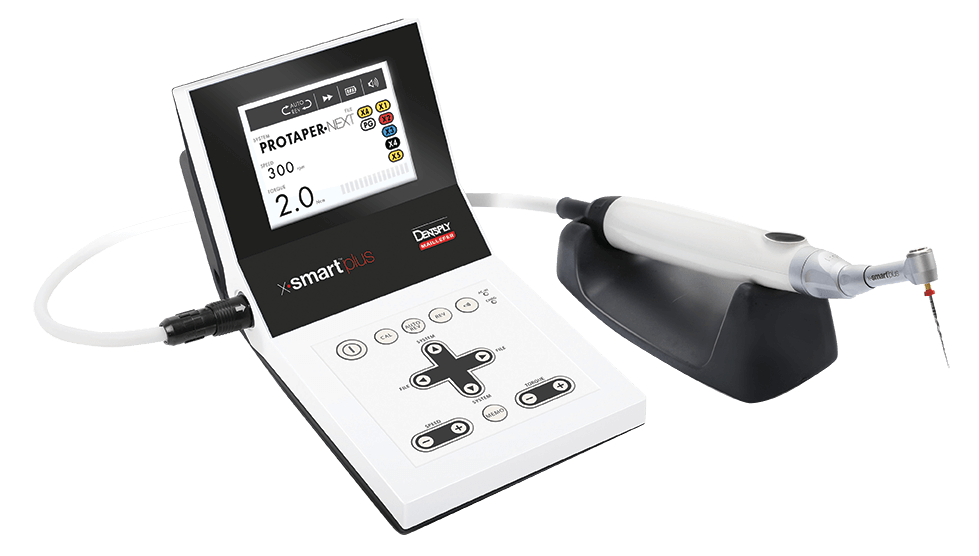
- Chair Time Reduction - Hand filling is a traditional process of performing root canals. But with rotatory endodontics using endomotors the root canals can be done faster. A good end-motor like 'Dentsply Sirona Endomotor' can reduce your chair time by more than 50% for root canal treatments.
- Increase Patient Comfort - Rotary Endodontics allows to explore options of computing the root canal cleaning obturation in a single sitting. Hence, this provides greater amount satisfaction & relief to the patient
- Less post operative pain
- More accuracy than traditional root canal method
Class B Autoclave
A dental autoclave is the machine that is used to properly sanitize dental equipment after its use. It utilises high pressure temperature & steam to combat debris & bacteria. It provides highly effective & safe sterilisation for instruments.
What is it?
It's a steam steriliser that uses a vacuum pump to remove air/steam mixtures from the chamber prior to sterilisation cycle beginning
State of the Art Sterilisation:
We take sterilisation & cleanliness very seriously. We chemically sterilise ultrasonically clean & autoclave (heat & steam under pressure) all reusable equipment. We never even use a dental drill more than once.
Some of the precautions we take include:
- Autoclave - Steam Sterilizer: All instruments capable of withstanding high heat are autoclaved which kills infectious bacteria & virus. All hand pieces (“drills”) and burs (“drill bits”) are autoclaved after each use.
- One Time use Items: Many items are single use & are disposed after each patient. This includes all syringes & saliva ejections.
- Disposable Gloves & Masks: Gloves & Masks are worn to prevent transmission of disease between you & us, as well as to provide protection from transmitting any diseases between patients in the clinic. Gloves are never used on more than one patient
- Surface decontamination & barriers: All surfaces (for example: countertops, dental chairs, lights, handles etc) are disinfected with the chemical solution to kill infectious bacteria, spores & viruses.
- We wear glasses to protect our eyes from contamination & injury: The doctors glasses are fitted with magnification lenses to provide higher intensity fibre optic light. We also use microscopes during procedures to magnify teeth. This helps us to keep teeth preparation as conservative as possible. Our patients will also be asked to wear safety glasses for their protection
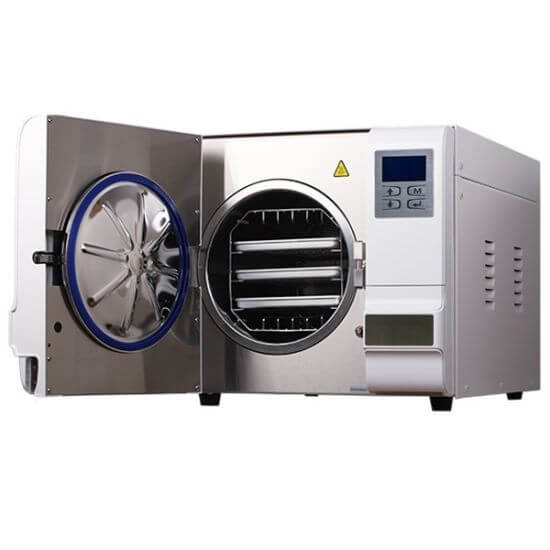
Dental Vibe
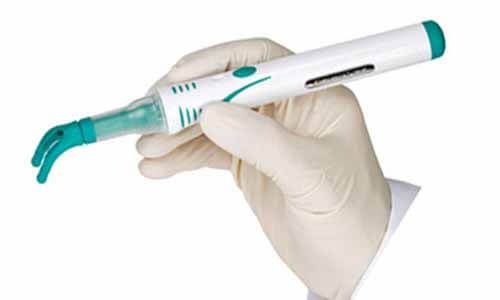
Dental Vibe is a patient comfort system that makes injecting local anesthesia into hard tissues and soft tissues much less painful. Dental Vibe, is a three-ounce, ergonomically designed, cordless, rechargeable, handheld device designed to look like a vibrating toothbrush Dental Vibe provides gentle vibrations at the injection site to overload the nerve that sends pain signals to the brain.
Taking the needle pain out of dentistry The Dental Vibe is a unique tool that can help alleviate dental fear and anxiety, allowing you to get the dental treatment you need to stay healthy. The Dental Vibe provides gentle vibration to the site of the dental injection. This vibration overloads the nerve that sends pain signals to the brain so that you don’t register the pain or discomfort from the injection.Dental vibe device uses the pleasant sensation of gentle vibration to stimulate patient’s gums and close the neural pain gate to the sting of needle injections. The vibration also spreads the numbing agent more effectively throughout the site of injection so that the whole dental process is painless
Radiovisiography (RVG)
In recent Your Messages, a digital imaging system - RADIOVISIOGRAPHY (RVG) has offered an alternative and instant method for measurement of intraoral radiography.Radiovisiography (RVG) as the latest imaging technique in dentistry with the minimal radiation exposure of the patient and numerous possibilities to process the images has many advantages over classic radiography.
Benefits of digital radiography:
- Less radiation is needed to produce the same quality image as film (70% less exposure to radiation)
- You can enhance the digital image with a series of processing techniques.
- Digital archiving-the ability to store images on a computer.
- Digital radiography produces larger photos to better source hard-to-see cavities
Extreme importance of Digital Radiography in Implantology
When accomplishing implant placement, using conventional radiography is a major inconvenience, as the entire aseptic procedure is disrupted and Your Message is wasted while the clinician awaits the development of the films several Your Messages during the implant placement procedure.
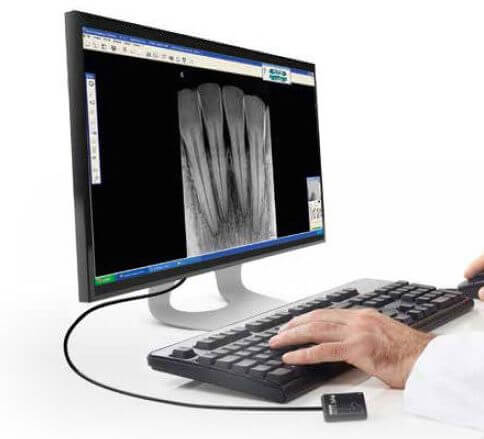
Advantage of Digital Radiography during the ROOT CANAL treatment
The digital image is available on the computer screen within a few seconds. As a result, digital radiographic systems are efficient aids in an eendodontic procedure, in which a second image easily can be made from a slightly different angle without removing the sensor out of patient's/client's mouth—for example, to make the second root canal better visible—with the sensor still in the same position, but with different angulation.
Intraoral Camera
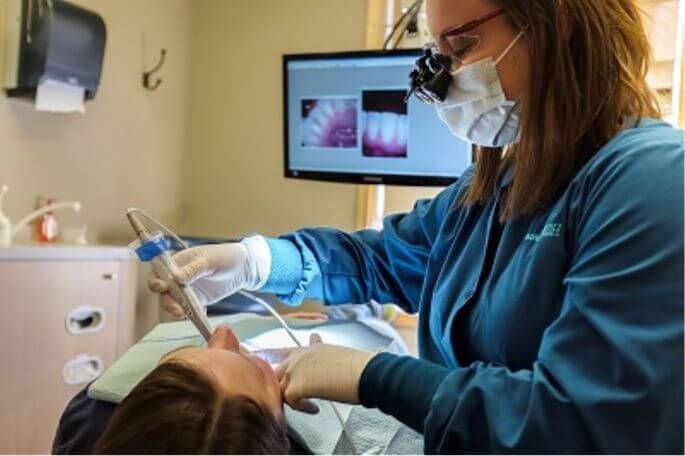
Intraoral cameras are now used on a regular basis in our clinics. In addition to helping the dentist make an accurate diagnosis, this technology allows patients to view and understand the condition of their teeth and gums.
What is it?
It's a digital camera that is about the size of a pen. It has a tiny lens (only a few millimetres in diameter) and contains its own light source (LED lights).
What is it good for?
- The images captured by the intraoral camera are shown on the screen and allow the patient to view first-hand what problem areas the dentist is referring to.
- Images help the dentist to notice some details or anomalies that may have been missed by the naked eye.
- The intraoral camera itself does not allow a diagnosis to be made, but it contributes to its improvement when it is combined with other technologies like X-rays.
- Digital images can be shared via e-mail with other dental specialists and used for insurance claims
- Saved in the patient's record, the images serve as reference during a treatment plan. They help to keep track of the evolution of the patient’s oral condition. With ‘before’ and ‘after’ photos, the patients are able to see the result of their treatment.
What's in it for you?
- The intraoral camera gives you an instant, clear and magnified view of the current status of your mouth.
- It allows you to make informed decisions related to your oral health problems and treatment options.
- It will be easy to keep track of your condition over Your Message because we can compare the changes of your teeth, gums and tongue on images stored in your record.
- Adding photo documentation to an insurance claim can often speed up the approval of that claim.
Laser
Laser dentistry can be a precise and effective way to perform many dental procedures. It has a potential to improve dental procedures and allowing for treatment of a highly specific area of focus without damaging surrounding tissues.
What is it?
If you consider yourself somewhat an anxious dental patient and are seeking extreme safety and comfort, you might looking for dentists like us who have incorporated laser techniques into practice and treatments.
Soft Tissue Laser
In what context do we use a soft tissue laser? The laser is used as part of several procedures:
- Gingivectomy (removing part of the gums for aesthetical reasons, hyperplasia or as part of a periodontal treatment)
- Gingivoplasty (a minor surgical procedure designed to reshape the contour of the gums)
- Operculectomy (removing part of the gingiva covering a growing tooth)
- Removal of an epulis situated on the gingival or alveolar mucosa, otherwise known as an inflammatory pseudotumour
- Frenectomy (surgical excision of a frenum)
- Crown lengthening
- Gummy smiles(lasers can reshape gum tissue)
